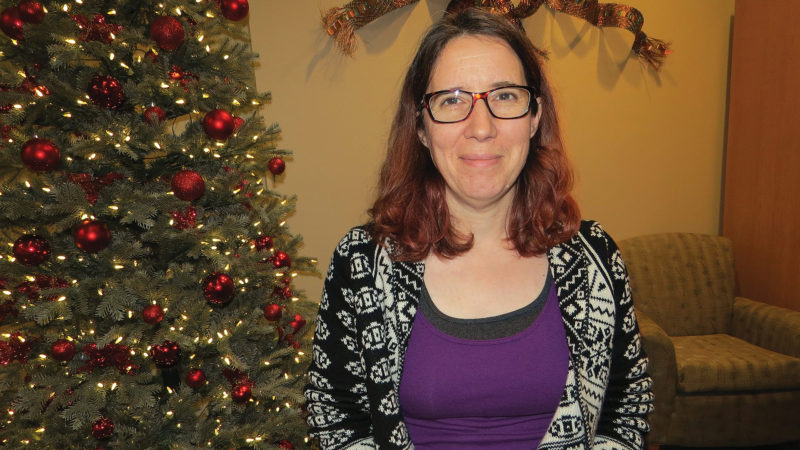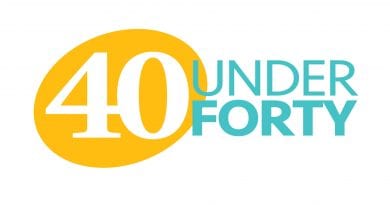These Volunteers Are Driven
By George O’Brien

And the Road to Recovery Program Needs More of Them
When asked how he came to participate in the American Cancer Society’s Road to Recovery program, which recruits volunteers to drive cancer patients to medical appointments, Ray Bishop was more than ready to answer that question.
He grabbed a book he had with him and quickly pointed to a passage within it while explaining that, 20 years ago, he couldn’t have read it — because he was essentially illiterate.
With help from literacy volunteers, he was able to put that embarrassing problem — one that he somehow managed to hide from others — behind him. Those volunteers gave him a precious gift, he said, but also something more, the firm desire to pay that kindness forward.
“If volunteers can help me, then I can volunteer to help others — that was my thinking,” said Bishop, as he talked with HCN in the waiting room at the Sister Caritas Cancer Center at Mercy Medical Center. He was there with Norman Clarke, a West Springfield resident he has driven to that facility several times over the past year or so.
“I’ve had a few friends who have had different types of cancer, and in talking to them, one of their biggest concerns, beyond getting well, was all their appointments.”
Now battling stage-4 cancer that has spread from his gallbladder to his liver, Clarke says he will go on fighting the disease, through aggressive chemotherapy treatments “that won’t stop until I tell them I can’t take it anymore.”

To fight this fight, he relies heavily on the Road to Recovery program and people like Bishop, many of whom have what amount to backstories when it come to their volunteerism and, specifically, this particular program. Indeed, many have loved ones who have battled the disease, and some have fought it themselves.
But others, like Becky Mason, simply have some flexibility in their schedules and found an intriguing and quite rewarding way to take full advantage of it.
“I was looking for a volunteer opportunity,” said Mason, who has been driving for just a few months now. “They had a table for the Road to Recovery program at a breast-cancer event I attended recently with a friend. I knew there was a large need because I’ve had a few friends who have had different types of cancer, and in talking to them, one of their biggest concerns, beyond getting well, was all their appointments and how they had to go here and there. And they can’t drive, obviously.
“I never really thought about it, because I never had to go through it myself,” she went on. “But it is definitely a stressor in their lives to make sure they have the rides to and from.”
There are more than 75 volunteers (50 who would be considered active) working to help relieve this stress by donating time and energy to the Road to Recovery program for the American Cancer Society’s Northwest Region, headquartered in Holyoke, said Kelly Woods, senior manager for Mission Delivery at that office, adding that each one has a different story, a different motivation for getting involved.

“Sometimes they’re cancer survivors or they have someone in their life who’s a survivor and they want to give back, or there’s someone they lost and that they want to honor,” she said, adding that, through November, volunteers provided roughly 1,000 rides in the four western counties. “But there are also individuals who are just looking for something meaningful to do; each story is different.”
Behind all their stories, though, is an even bigger one, said Woods, who told HCN there is now a critical need for more drivers to meet the number of requests for assistance pouring into the agency. Among all the statistics she has regarding this program — and there are many — perhaps the most eye-opening, and easily the most concerning, involves how many requests the agency is not able to honor.
“Last year, in Hampden County alone, there were a little more than 300 rides that we could not meet,” she said, adding that, over the past few years, the program has lost some drivers due to what she called “natural attrition,” a situation that has actually led to fewer requests for rides.
This has left the local chapter in what she termed a rebuilding mode, meaning it is actively recruiting new drivers, with the goal of being able to meet more requests, thus generating more referrals down the road, as they say.
For this issue, HCN takes an in-depth look at the Road to Recovery program, the drivers who are its life blood, and the critical need for more volunteers to step forward.
Driving Force
Mason works as a project manager for a company called Test America, which tests water and soil. Her duties fall largely within the realm of customer service, she explained, adding that she’s often on the phone with clients discussing scheduling or test results.
While there’s always plenty to do, there is room for flexibility with her schedule, she went on, adding that she had this flexibility firmly in mind when she learned about the Road to Recovery program and started considering whether she could become a part of it.
“They talk to me more about their stuff than I think they do with their own families. I’m kind of like a second doctor sometimes; they’re not afraid to talk about it.”
The more she learned, the more intrigued she became. She learned, for instance, that drivers can essentially choose their assignments and how many they take on — at least a few times a month is requested. She was intrigued by the mission, impressed by the level of training that drivers must undertake (more on that later), and motivated by the obvious need for more volunteers.
And just a few months in, she can say it’s been an extremely rewarding experience.
“It gives me warm fuzzies when I do it,” she explained. “I like to help people, and I feel that when I do this I’m making a good impact on the world, I’m doing a good deed that is making a bright spot in someone’s life. I can’t change the world, but I can at least help one person with one small thing that they couldn’t get done.”
With that, she pretty much spoke for everyone who has been part of this program, said Woods, adding that Road to Recovery has been a big part of the landscape at the cancer society for decades now.
At the heart of the program lies a very basic need. Indeed, cancer care has improved exponentially over the past several decades, but it is a simple fact that, in most cases, people need to travel to receive treatments — often several times a week and even daily, as with radiation treatments.
And a good many of them, even those with family and a strong core of friends, need help getting ‘to and from,’ as Mason put it.
“These treatments can last several months, and then there’s follow-up appointments,” she explained. “Even for people with a good family network and friends, that gets tapped after a while. It may be that at the beginning they don’t need any help, but as time goes on, they do.
“And sometimes, we just serve as that ‘in-between,’” she went on. “Radiation treatment is six weeks — that’s 30 rides. They may be able to parcel 20 together, but they may need us for 10. And sometimes, we do all 30 because people don’t have a support network.”
To become a volunteer, one must obviously have a vehicle, a valid driver’s license, and a good driving record, said Woods. But they must also undergo a screening process and some training, the former involving a criminal background check and the latter including everything from using something called a service match portal computer to pick and schedule assignments to understanding the many rigid privacy laws now on the books.
“It’s great for the drivers, because there’s flexibility,” Woods said of the match portal. “They can log in as often as they want, and the system communicates with them and sends them e-mails if there are requested rides in their area.”
But there are some things that cannot really be taught, she told HCN, noting that drivers essentially have to learn how to share time — and a front seat — with someone going through perhaps the most difficult time of their life.
Elaborating, she said they have to get a feel for what to talk about and when, knowing that cancer patients have both good and bad days.
Bishop, who drives two or three times a week, a schedule he’s maintained since he retired five years ago, said he learned this early on. He also learned that many patients do like to open up about their condition, their treatments, and life in general.
“They talk to me more about their stuff than I think they do with their own families,” he said. “I’m kind of like a second doctor sometimes; they’re not afraid to talk about it.”
Clarke said that individuals like Bishop are more than drivers; they’re companions and good listeners who help take some of the stress out of an already very stressful and difficult time.
“A lot of the people who drive me have been through cancer or have seen a family member affected by it, and that’s why they’re doing it,” he said. “I can’t thank them enough — they take a lot of stress off my wife; I do this to break it up so that she can have a life without running me back and forth all the time.”
The Ride Stuff
Moving forward, the biggest challenge is to recruit more drivers and thus reduce the number of requests that could not be met, said Woods, adding that, while there are many retirees within the current roster of drivers, one doesn’t have to wait until they’re done working to be a part of this program.
Indeed, she said a number of college students drive, as well as those who work second or third shift, like police officers and firefighters, and those like Mason — and Woods herself — who have some flexibility in their schedules.
The only real requirement is to be able to drive between 8 a.m. and 5 p.m., when most all appointments are scheduled, she said, adding that those interested in volunteering can call (800) 227-2345 or log onto cancer.org for more information.
If they do call that number and become part of this special volunteer force, they will find a way to give back that is rewarding on a number of levels, said all those we spoke with.
They’ll discover, as Mason did, that while they can’t change the world, they can help one person in a very meaningful way.



